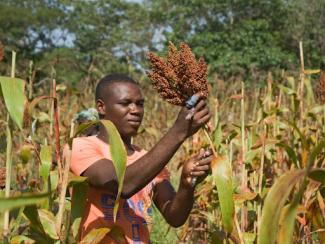
Our people have used molasses and sorghum for centuries, from drizzling atop warm cornbread in the South to using it as firewood on the African continent. Both honey-esque foods have ties more bitter than sweet to our bondage.
The grassy sorghum plant was transported across the Atlantic during the slave trade, spreading heavily throughout the South due to its resilience in hot, dry climates. At the same time, molasses was first cultivated in the Caribbean, the epicenter of sugarcane plantations. It was used to produce rum.
Molasses was part of a vicious cycle historians call the ‘Triangle Trade.’ Our people produced molasses on Caribbean plantations, which enslavers turned into rum in New England states like Rhode Island. Then, they loaded barrels onto ships bound for African countries and used them to purchase our people.
Sorghum was a cheap foodstuff that fed enslaved people and animals. But for some of our people, it was resistance.
In his book “The Cooking Gene,” culinarian Micheal Twitty writes about his great-great-grandmother, a woman in 1800s Alabama who drowned her enslaver in a barrel of cane syrup during a fight. The sticky story inspired his sorghum-brined chicken recipe.
Like Sorghum and Molasses, we, too, have been replanted across the world by coloniality, blossoming in places never meant for us. Many countries wouldn’t be what they are today without our people’s skills, labor, and creativity.